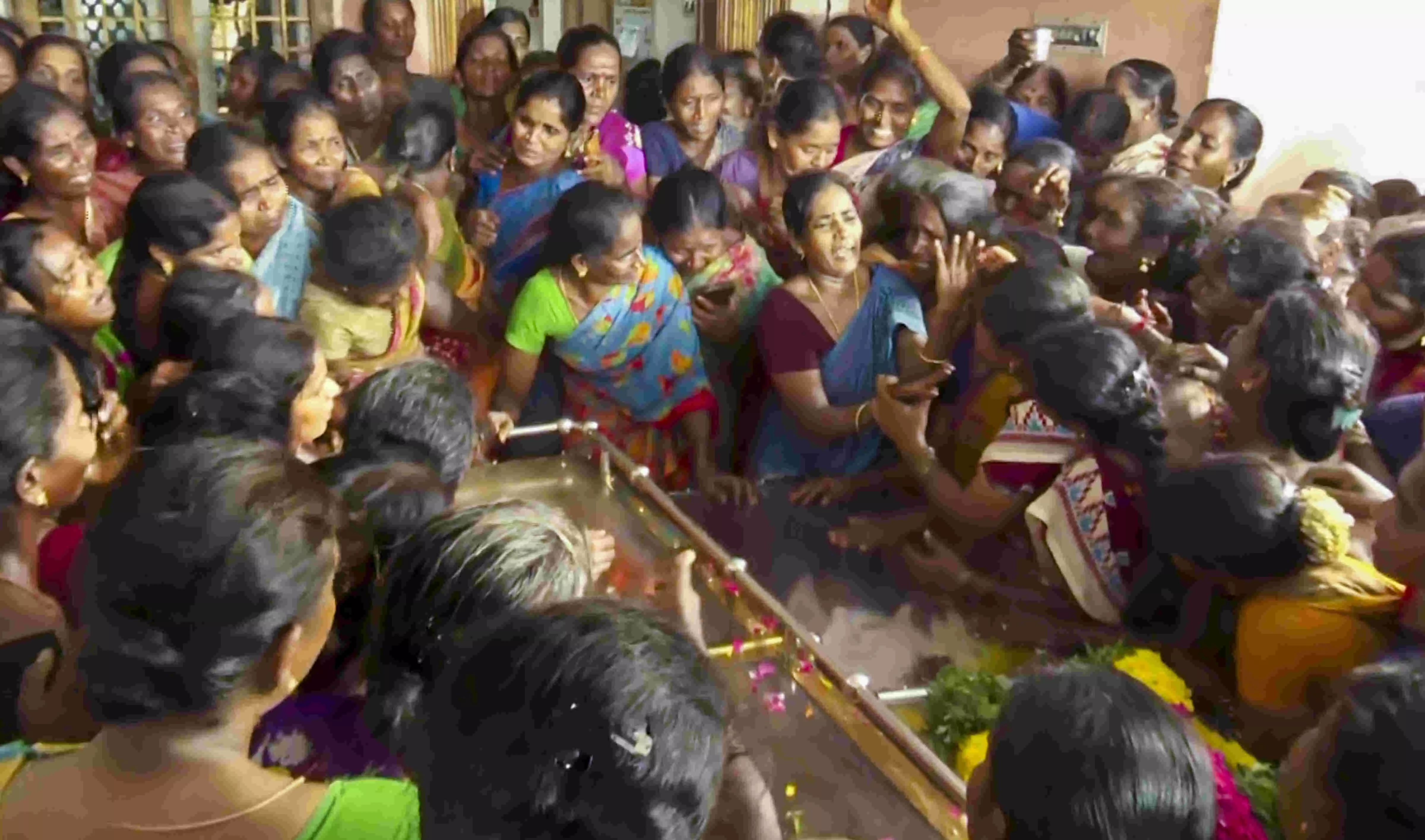Fatal Failure

On the morning of July 8, three young students—Charumathi (16), Sezhiyan (15), and Nimalesh (12)—were crushed under the iron wheels of systemic negligence at Semmankuppam in Tamil Nadu’s Cuddalore district. Their school van was hit and dragged by the Villupuram–Mayiladuthurai passenger train at a manned level crossing that, in the first place, should have never been open. What was supposed to be a routine ride to school turned into a death sentence because of an avoidable failure at multiple levels.
Initial statements by the Southern Railway suggest the gatekeeper, Pankaj Sharma, attempted to close the gate but was pressured by the van driver to allow passage. He has since been suspended and arrested. However, eyewitness accounts and statements by a surviving student tell a different story—that the gate was already wide open and no warning of the train’s approach was audible. Some reports claim the gatekeeper had dozed off. Others say he had exchanged the safety code with the station master—a requirement under railway protocol. However, what is undeniable is that the essential duty—to close the gate and secure the crossing—was grossly neglected. In fact, this is not an isolated lapse; it is part of a longstanding crisis in railway safety infrastructure. The gate in question, Gate No. 170, is a non-interlocked manned crossing—a primitive relic in a modernising nation. Unlike interlocked gates that are automatically coordinated with train signals, non-interlocked ones depend entirely on human vigilance. That vulnerability has engulfed the lives of three innocent souls. Reports suggest that currently, in the Southern Railway zone alone, more than 300 gates remain non-interlocked. The continued reliance on the outdated manned system is indefensible by all accounts. Lives of people should not be left dependent on a single individual’s ability to stay alert, as even momentary lapses can lead to irreversible tragedy.
Reports have further revealed that a fully funded underpass had already been sanctioned at this very crossing, but was held up for over a year awaiting clearance from the Cuddalore District Collector. Had the approval been granted on time, these children might be alive today. The blame, therefore, does not rest on a single individual. It is shared across an apathetic bureaucracy, fractured coordination between agencies, and a political class that reacts with ex-gratia announcements but rarely with systemic reform. What is worse, this is not the first time that such deaths have occurred at level crossings in India. Every year, children, workers, and commuters fall prey to a system that refuses to prioritise safe infrastructure. And each time, the script remains the same: outrage, blame, condolence, and compensation. The necessary systemic overhaul never arrives.
The time for temporary fixes and routine inquiries is over. The government needs to act decisively and swiftly. There is a pressing need to immediately convert all non-interlocked level crossings to interlocked ones. The government should also expedite stalled underpass and overbridge projects and hold district administrations accountable for unnecessary delays. Furthermore, for the time being, there is a need to strengthen gatekeeper training, reduce duty hours, and install surveillance mechanisms to monitor safety standards in real time. The introduction of automated warning systems—such as sirens and flashing lights—at all manned gates, interlocked or not, could also go a long way in ensuring safety. At a time when India dreams of bullet trains and Viksit Bharat, the nation faces a critical question: what development can justify a nation where children die on the tracks because a railway gate wasn’t shut in time? The boastful claims behind infrastructural marvels in the railways need to be matched with delicate safety protocols to ensure that the tracks don’t just shine for cameras but also remain secure for people.



